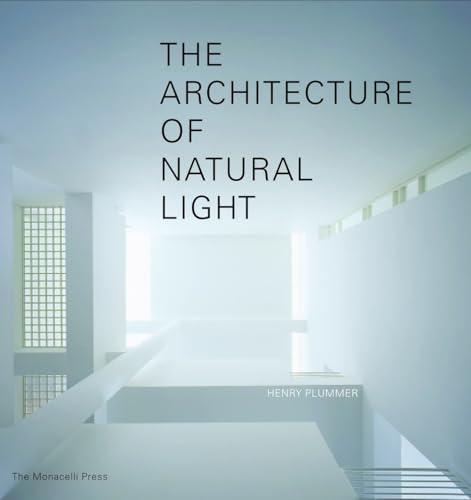Articoli correlati a The Architecture of Natural Light

Sinossi
Considers the effects of natural light in contemporary architecture, discussing seven specific light qualities to reveal how they are used in a variety of structural disciplines, in a volume that includes case studies of buildings by some of the world's most influential architects.
Le informazioni nella sezione "Riassunto" possono far riferimento a edizioni diverse di questo titolo.
Informazioni sull?autore
Henry Plummer teaches architectural theory and design at the University of Illinois, and is an associate of the Center for Advanced Study there. He received his M.Arch. from M.I.T., studied light art with Gyorgy Kepes, and was a photographic apprentice to Minor White. He is the author of numerous books, most recently Masters of Light, First Volume: Twentieth-Century Pioneers.
Dalla quarta di copertina
Shelter and natural light are fundamental elements of architecture. The first is concerned with protection from natural elements; the second with the creative and sometimes spiritual interaction between the man-made and the natural worlds. One is solid and static, the other illuminates and animates.
Architects through the ages have preoccupied themselves with how to marry these two opposing aspects of architecture, a marriage that at its finest transforms natural light itself into a building material. Seen through the eyes of an architect and photographer, The Architecture of Natural Light is the first publication to consider the many effects of natural illumination in contemporary buildings. This comprehensive and thoughtful survey begins with a brief introduction exploring the advances and experimentation of architects throughout the centuries. Each of the following seven chapters is devoted to a specific quality of natural light, including evanescence, atomization, and luminescence, and examines the particular uses of light through many disciplines-from art history to film and literature. With more than fifty case studies of buildings from around the world, this volume considers works by some of the world's most influential architects, including Tadao Ando, Steven Holl, Herzog & de Meuron, Peter Zumthor, Frank Gehry, Álvaro Siza, Alberto Campo Baeza, Rafael Moneo, Rem Koolhaas, Jean Nouvel, Fumihiko Maki, and Toyo Ito, among others.For all those seeking to create space that transcends the physical, The Architecture of Natural Light is a powerful and poetic yet practical survey that provides an original and timeless approach to contemporary architecture.
Le informazioni nella sezione "Su questo libro" possono far riferimento a edizioni diverse di questo titolo.
EUR 38,32 per la spedizione da Canada a Italia
Destinazione, tempi e costiCompra nuovo
Visualizza questo articoloEUR 26,40 per la spedizione da U.S.A. a Italia
Destinazione, tempi e costiRisultati della ricerca per The Architecture of Natural Light
The Architecture of Natural Light
Da: GoldBooks, Denver, CO, U.S.A.
Hardcover. Condizione: new. New Copy. Customer Service Guaranteed. Codice articolo 65T41_17_1580932401
Quantità: 1 disponibili
The Architecture of Natural Light
Da: Acadia Art & Rare Books. Est. 1931, Toronto, ON, Canada
Condizione: Near Fine. Condizione sovraccoperta: Near Fine. 1st Ed. Hardcover with complete Dj. 4o. 255pp. Illustrations in color. A clean and unmarked copy. Codice articolo 67005
Quantità: 1 disponibili
The Architecture of Natural Light
Da: GoldBooks, Denver, CO, U.S.A.
Condizione: new. Codice articolo 80N77_40_1580932401
Quantità: 1 disponibili

